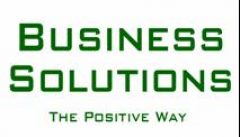Stopping losses is often as important as finding improvements – especially in a worsening business climate such. Your sales and credit departments are going to come into conflict over this matter so it is going to take strong management leadership to make the right decisions.
Stopping losses is often as important as finding improvements – especially in a worsening business climate such. Your sales and credit departments are going to come into conflict over this matter so it is going to take strong management leadership to make the right decisions. The names have been changed in the following story but the essence is true. A client told me:
“We’d been doing business with Samssco for about 15 years and they were an important customer to us. We held their hands and were patient with them over the years when they were late making payments off and on over the years. I’d call Sam, he’d tell me what was going on and we’d ship him more product and wait. He’d always pay us. We got a really large order from Samssco – almost twice the normal size but they were already late on the last payment. I called Sam but he wasn’t available. That worried me so I asked our shipping department not to ship. I called Sam again and had to leave a message. Two weeks later I learned that Samssco had filed for bankruptcy. I was devastated. I thought Sam was a friend. We lost over $25,000 but if I had let the last shipment go it would have been over $75,000 and we would have been in trouble along with Sam.”
Revenue may be nice but sales that are written off are far more than lost revenue when they eat the profits from other sales! Make sure you understand the credit health of your customers at all times and don’t rely on sales people to make the credit judgments that you need a financial professional to make. You’ll save yourself a lot of tension and morale in the sales force and probably a lot of money in the long run. How large is your reserve for such losses? In what ways could you reduce it?
Here are six warning signs that may indicate credit trouble ahead before a meaningful change shows up in their credit rating – which you should be monitoring in any case.
Credit Warning Signs
1. Delays in payments. This is an obvious sign and your accounts receivable system should be set up to monitor and report on this on a continuous basis. Make sure you have a team of managers who are in the loop so they can see this and any of these other warning signs and take action quickly.
2. Changes in ordering patterns. The first sign may be a slowing in order volume. This is usually an indication that your customer is experiencing a slowdown in their business. The last sign may be a surprise order of a much larger size than usual. This could indicate that your customer is trying to stock up in advance of getting cut off.
3. Communication problems. You or your staff may have more trouble than usual getting through to your contacts at the company that owes you money. This is especially worrisome when the usual channels of communication for following up on open invoices suddenly slow down.
4. Pressuring the sales force. Your sales force might start getting pressured to make sales in spite of existing credit limits. This is the time to advise your sales team to keep their eyes and ears open for any signs of trouble at the customer or changes in the market.
5. The business sector is in trouble. Know which sectors your customers service directly and indirectly. Remember that that business slow-downs trickle down.
6. The grape vine is humming. Keep your ears open for those tidbits of information that are known to make their way through the industry. Ask all of your people who are in the field or talk to people in the industry to pass on information for the good of the company. Use any “casual” information legally and responsibly and only with appropriate verification.
Manage your credit risk deliberately
It is very costly to write off bad debt because you not only lose the profit on the original sales (if derived from sales) but you also have to make additional sales to cover the cost of sales just to break even.
Profit Improvement
Bad debt is a profit killer. A good profit improvement process invariably includes measures to reduce losses. Don’t give your profits away.
